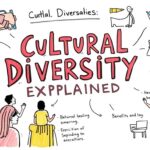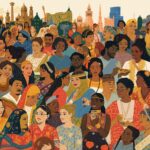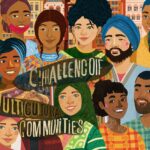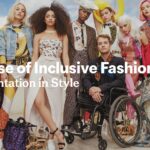We offer a wide collection of free, high-quality printable coloring pages for kids and adults. From cute animals to intricate mandalas, our designs bring creativity and relaxation to everyone. Download, print, and start coloring today!
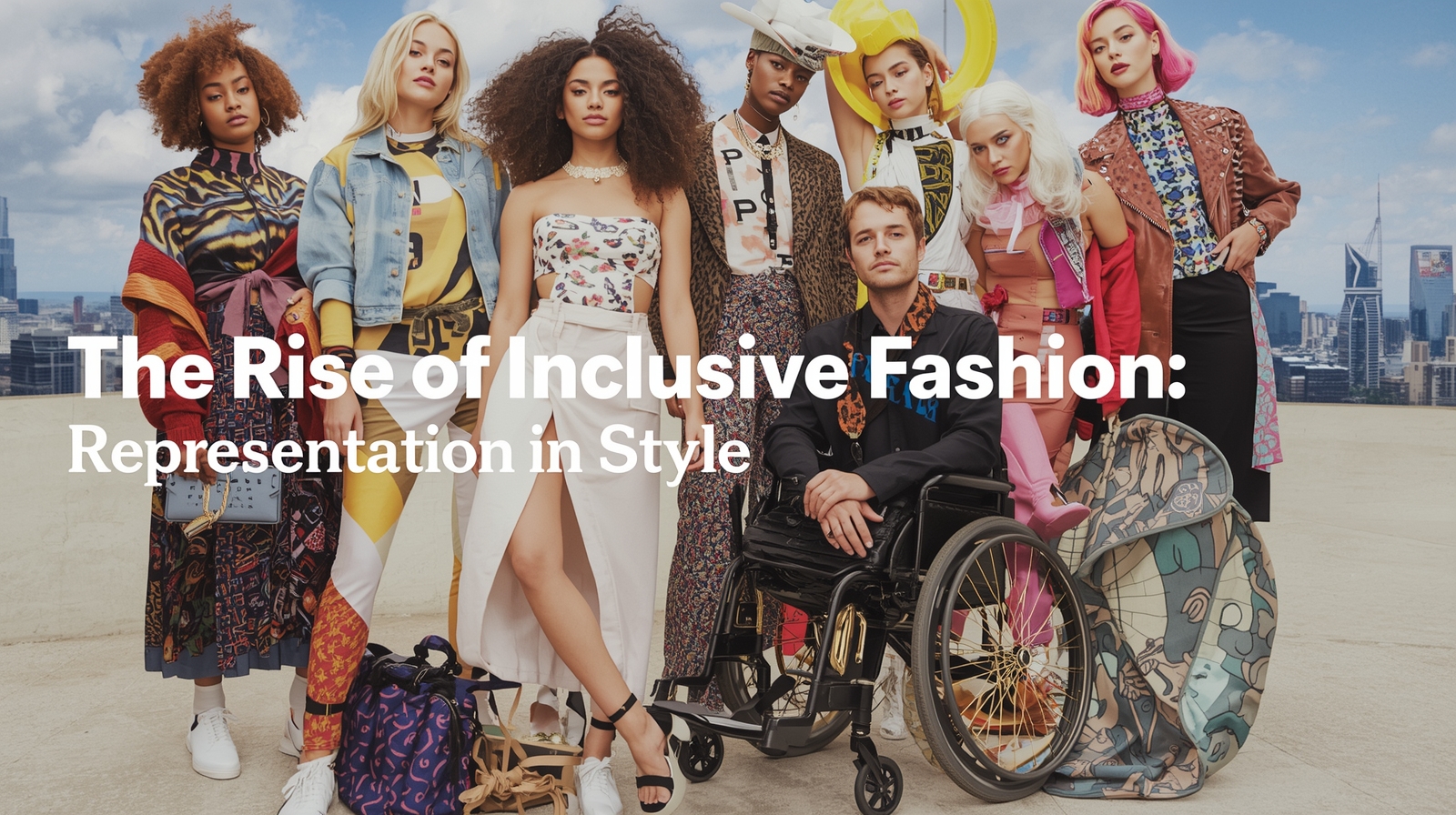
Have you ever felt left out when shopping for clothes because nothing seemed made for you? The fashion world is evolving, and it’s becoming increasingly inclusive for everyone.
Inclusive fashion is not just a trend, it’s a movement that brings real representation to style. This means you can finally see yourself reflected in the clothes, campaigns, and designs around you. Keep reading to discover how this shift can transform your wardrobe and why your style deserves to be seen and celebrated.

Credit: www.voguebusiness.com
Growth Of Inclusive Fashion
The rise of Inclusive Fashion marks a significant change in the Fashion industry’s Approach to Inclusion. People want to see more Representation In styles that show all body types, genders, and abilities. Fashion diversity grows as brands make clothes for everyone, including Plus Size Fashion, Gender-Neutral Fashion, and Adaptive Clothing. This change helps promote Body Positivity and Fashion Accessibility. The idea is to make style open to all, no matter size, shape, or need.
Early Movements And Milestones
The start of Inclusive Fashion came from people who wanted change in how clothes fit and represent them. For many years, fashion mostly showed one type of model. This left out many groups. Some early moments helped push the idea of Fashion Activism.
- 1960s-70s:The body positivity movement began, challenging narrow beauty rules.
- 1980s:Designers started to use models of different sizes and ethnic backgrounds.
- 1990s: Plus-size fashion lines appeared, making clothes for bigger bodies.
- 2000s:Adaptive clothing for people with disabilities gained attention.
These steps showed that the Fashion Industry Inclusion was growing. They made the fashion world think about different needs. The rise of social media also helped voices call for more Fashion Diversity and Representation In Style. People wanted to see themselves in ads and on runways.
Key Brands Leading Change
Several brands now focus on Inclusive Fashion. They create clothes for all shapes, sizes, and needs. These brands help the industry move toward real Fashion Accessibility and Body Positivity.
| Brand | Focus | Contribution |
|---|---|---|
| Universal Standard | Plus Size Fashion | Offers sizes from 00 to 40, promoting size inclusion. |
| Tommy Hilfiger Adaptive | Adaptive Clothing | Designs clothes with easy closures for people with disabilities. |
| TomboyX | Gender-Neutral Fashion | Creates underwear and clothes for all gender identities. |
| ASOS | Fashion Diversity | Uses diverse models and offers plus sizes and adaptive options. |
These brands show how Fashion Activism works in real life. They help people feel seen and valued. Their work grows the idea of Representation in Style for all.
Diversity In Models And Campaigns
The fashion world is changing fast. More brands are showing different types of people in their ads and on runways. This change is called inclusive fashion. It means fashion includes everyone, no matter their size, skin color, or gender. Showing many kinds of people helps others feel seen and valued. Diversity in models and campaigns is now very important. It helps break old ideas about beauty and style. Fashion is becoming a place where everyone can find something that fits them and feels right.
Body Positivity And Size Inclusivity
Body positivity is about loving your body, no matter its shape or size. Size inclusivity means making clothes for all sizes, not just small ones. Many fashion brands now use models of different sizes. This shows that beauty is not one size only. People feel better when they see clothes made for their size. This helps boost confidence and self-esteem. Clothes are made to fit and flatter many body types.
- More brands offer plus sizes.
- Runways show models of all sizes.
- Ads include people of different shapes.
Here is a simple table showing size ranges in fashion:
| Size Category | Typical Size Range |
|---|---|
| Petite | 0-4 |
| Standard | 4-12 |
| Plus Size | 14 and up |
Ethnic And Cultural Representation
Fashion now shows people from many ethnic backgrounds. This helps everyone feel included. It also teaches about different cultures and styles. Clothes inspired by various cultures add beauty and meaning to fashion. Many brands use models with different skin colors and features. This shows that style belongs to all people. More fashion shows happen in different countries too, showing local designs.
- Models from many ethnic groups are featured.
- Designs include cultural patterns and fabrics.
- Fashion events happen worldwide.
Brands that focus on ethnic representation often:
| Action | Example |
|---|---|
| Hiring diverse models | Campaigns with Black, Asian, and Latino models |
| Using traditional fabrics | Clothing with African prints or Indian embroidery |
| Collaborating with local designers | Showcasing fashion from different countries |
Gender Fluidity In Fashion
Fashion is moving beyond just men’s and women’s clothes. Clothes are made for anyone, no matter their gender. This is called gender fluidity in fashion. It means fashion does not have strict rules about who wears what. Many brands now offer unisex clothes. These clothes fit and look good on all bodies. This helps people express themselves freely. It also challenges old ideas about gender and clothing.
- Unisex collections are growing.
- Runways include gender-neutral looks.
- People feel free to choose any style.
Gender fluid fashion benefits include:
| Benefit | Description |
|---|---|
| Freedom | Wear what feels right, no limits |
| Comfort | Clothes designed for all body types |
| Expression | Show personality without gender rules |
Adaptive Clothing And Accessibility
The rise of inclusive fashion shows how style can be for everyone. Adaptive clothing and accessibility make clothes easier to wear for people with different needs. More brands now create clothes that fit all bodies. This change helps many feel confident and comfortable. Clothes are not just about looks but also about how they work for each person. Fashion is growing to include people of all abilities.
Designing For Disabilities
Designers focus on making clothes easy to wear for people with disabilities. Clothes may have special features to help with daily activities. For example, pants with side openings help people who use wheelchairs. Shirts with magnetic buttons are easier for people with limited hand movement. Important ideas in designing adaptive clothing:
- Comfort: Soft fabrics and loose fits prevent irritation.
- Easy dressing: Velcro, magnets, and elastic help fasten clothes.
- Accessibility : Clothes that work well with medical devices or mobility aids.
- Style: Modern looks that do not stand out as “special.”
Many brands now use these ideas to create clothes for everyone. This makes fashion more open and welcoming.
Technological Innovations
New technology helps make adaptive clothing better and more useful. Some fabrics can stretch or change shape to fit well. Others can control the temperature to keep the wearer comfortable. Technology also helps design clothes faster with 3D printing and scanning. Examples of technology in adaptive fashion:
| Technology | Use in Adaptive Clothing | Benefits |
|---|---|---|
| Magnetic Closures | Replace buttons and zippers | Easy to open and close |
| 3D Body Scanning | Custom-fit clothes | Better comfort and style |
| Smart Fabrics | Temperature control and stretch | Keeps the wearer comfortable all day |
| 3D Printing | Creates customized parts | Fast and precise production |
Technology makes clothes fit better and work well for many people. It helps fashion include all kinds of bodies and needs.
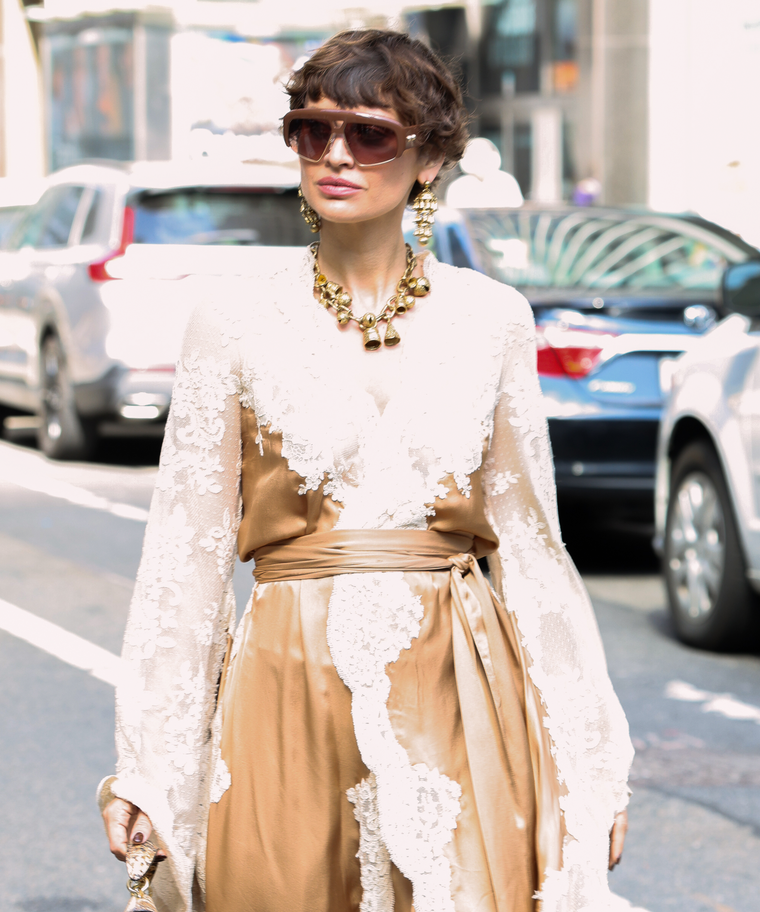
Credit: www.refinery29.com
Consumer Impact And Demand
The rise of inclusive fashion shows a big change in style. More brands now include all kinds of people in their clothes. This change affects what customers want and how they buy. People expect fashion to reflect different sizes, colors, and abilities. The demand for clothes that fit everyone is growing fast. This makes brands pay attention to who they show in ads and stores. Inclusive fashion is about making everyone feel seen and valued. It helps people feel confident and happy with their style.
Shifting Buyer Expectations
Buyers want more than just clothes. They want brands to respect diversity and show real people. Shoppers look for clothes that fit their body type and style. They want options for all ages, shapes, and backgrounds. Important buyer expectations include:
- More size options for all body types
- Clothes for different abilities, like adaptive wear
- Ethnic and cultural representation in styles and models
- Eco-friendly and ethical production methods
- Affordable prices without losing quality
Shoppers also want brands to show real stories. They look for honest ads with real people, not just models. This builds trust and loyalty. Brands ignoring these changes risk losing customers. The shift means brands must listen and adapt fast.
Social Media Influence
Social media plays a big role inclusively. Platforms like Instagram and TikTok allow people to share their style. They show how clothes fit different bodies and personalities. This helps others find clothes that suit them. Social media impact includes:
- More visibility for diverse models and creators
- Direct feedback from customers about what they want
- Viral trends that celebrate uniqueness and diversity
- Community support for brands that embrace inclusion
Many brands use social media to highlight their inclusive efforts. They share stories and photos of real customers. This creates a strong connection between the brand and its audience. Social media also exposes brands that fail to be inclusive. This pushes companies to improve and stay honest. It is now a key tool in shaping the future of fashion.
Challenges And Criticisms
The rise of inclusive fashion has changed how people see style today. More brands now focus on showing different body types, skin colors, and abilities. This helps many feel seen and valued. Still, some challenges and criticisms come with this change. Some worry about the true meaning of inclusion and how easy it is to access inclusive clothes. These issues need attention to make fashion truly open for all.
Tokenism And Authenticity
Sometimes brands include diverse models or styles just to appear inclusive. This is called tokenism. It means using diversity as a marketing tool without real commitment. Authentic inclusion means more than just images or ads. It requires:
- Creating clothes that fit all body types well.
- Listening to the needs of different communities.
- Hiring diverse people in design and leadership roles.
Many people feel tokenism is shallow and does not solve deeper problems. They want brands to be honest and consistent. Authenticity builds trust and respect from customers.
Pricing And Availability
Inclusive fashion sometimes costs more. This can stop many people from buying it. Prices rise due to:
- Special materials or designs for different bodies.
- Smaller production runs for niche markets.
- Higher costs for quality and customization.
Availability is another problem. Inclusive styles may be hard to find in stores or online. This limits who can enjoy these clothes.
| Challenge | Reason | Effect |
|---|---|---|
| High Pricing | Special designs and materials | Limits customers with less money |
| Limited Availability | Small production and niche markets | Hard to find inclusive options |
| Unequal Distribution | Focus on certain areas or stores | Some communities are left out |
Making inclusive fashion affordable and easy to find is important. It helps more people feel welcome in the fashion world.
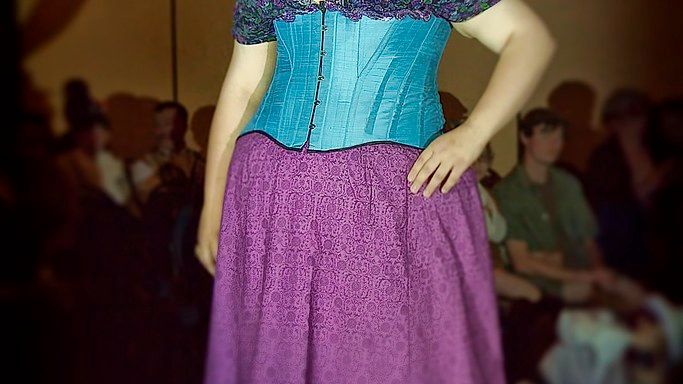
Credit: thecurvyfashionista.com
Future Trends In Inclusive Style
The world of fashion is changing fast. Inclusive Fashion is at the center of this change. It means clothes and styles for all body types, cultures, and abilities. Representation In Fashion is growing, showing more diversity in ads, runways, and stores. Future Trends in Inclusive Style focus on making fashion fair and open to everyone. More brands care about Sustainable Fashion and Ethical Fashion Practices. This helps protect the planet while respecting people. The Fashion Industry Inclusivity movement is breaking old rules. It brings new ideas about Beauty and Style. This is a fresh start for many. If you want to check out also Definition, Benefits & Examples of Cultural Diversity.
Sustainable And Ethical Practices
Sustainable Fashion is more than a trend. It is a needed change for the planet. Eco-Friendly Fashion Trends use materials that do not harm the earth. Brands now choose organic cotton, recycled fabrics, and low-water dyes. These choices reduce waste and pollution. Ethical Fashion Practices also focus on people. Workers get fair pay and safe conditions. This respect builds trust and helps communities grow stronger. Key points of Sustainable and Ethical Practices:
- Use of organic and recycled materials to reduce waste.
- Low-impact dyeing processes that save water and energy.
- Fair wages and safe workplaces for garment workers.
- Reducing overproduction to avoid excess stock and waste.
- Encouraging slow fashion with timeless and durable designs.
These practices promote a healthier planet and a kinder fashion world. They support the idea of Body Positivity In Fashion by creating clothes for all shapes without harming the earth. Sustainable Fashion and Ethical Fashion Practices work together to bring real change in the industry.
Global Influence And Collaboration
Cultural Influence In Fashion is growing strong. Fashion Diversity now includes styles from many countries and traditions. This mix gives new life to old ideas. Designers and brands learn from different cultures. They blend styles to create fresh looks that everyone can enjoy. Global Fashion Collaboration helps this process. Designers from different parts of the world work as a team. They share skills and ideas. This teamwork shows respect for many cultures and stories. Benefits of Global Fashion Collaboration:
| Benefit | Impact |
|---|---|
| More diverse designs | Clothes that fit many cultures and tastes |
| Sharing knowledge | New techniques and fabrics improve quality |
| Building respect | Shows value for all cultures and traditions |
| Expanding markets | Fashion reaches more people worldwide |
Representation in Fashion grows with this global teamwork. It helps to see different body types, skin colors, and styles in fashion. Fashion Industry Inclusivity is stronger when different voices join. This future trend makes fashion open and welcoming for everyone.
Frequently Asked Questions
- What Is Inclusive Fashion? Inclusive fashion embraces diversity by designing clothing for all body types, abilities, genders, and ethnicities. It promotes representation and accessibility in style, ensuring everyone feels confident and included.
- Why Is Representation Important In Fashion? Representation in fashion helps reflect diverse identities and cultures. It fosters acceptance, breaks stereotypes, and encourages brands to create designs that cater to varied customer needs.
- How Does Inclusive Fashion Benefit Consumers? Inclusive fashion offers more choices and a better fit for everyone. It boosts self-esteem and promotes equality, making fashion a welcoming space for all individuals.
- Which Brands Lead In Inclusive Fashion? Brands like Savage X Fenty, Universal Standard, and Chromat are pioneers. They prioritize diversity in size, race, gender, and ability, setting new industry standards.
Conclusion
Inclusive fashion shows how style can welcome everyone. It celebrates all shapes, sizes, and backgrounds. This change helps people feel seen and valued. Brands now focus on real diversity in their designs. Clothes become a way to express identity freely.
Society grows stronger when everyone belongs in fashion. The rise of inclusive style marks a positive shift. It invites us all to be part of the story. Fashion is not just for some but for all. Representation matters—now more than ever.

